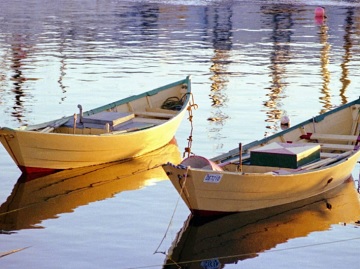Daily Archives: November 14, 2021

Unresponsive fisherman pulled from Plymouth Harbor
A missing lobsterman was found unresponsive in the waters of Plymouth Harbor on Sunday afternoon. The U.S. Coast Guard said they received a report around 1:20 p.m. of an unmanned lobster boat out in Plymouth Harbor. They began searching the area by helicopter. During the search, the Plymouth harbormaster reportedly found the lobsterman unresponsive in the water. >click to read< 19:23

Moratorium sought on herring fisheries; critical for salmon
Conservationists are calling for a moratorium on both the upcoming food-and-bait herring fishery in the Strait of Georgia and next season’s roe herring fishery,,, They fear herring living year-round in the Strait of Georgia are at risk due to fishing.,, Conservancy Hornby Island said Strait of Georgia herring stocks are little understood. The organization is among groups urging Fisheries Minister Joyce Murray to impose a moratorium on the fish-and-bait and the roe herring fisheries to rebuild stocks coastwide.,, Rob Morley, chairman of B.C.’s herring industry advisory board, has a different view of herring fisheries in the strait, saying scientific analysis and modelling show it’s a sustainable fishery with healthy stocks. “It is our feeling that it is a very well-managed sustainable fishery.” >click to read< 16:06

How Grand Bank made the ‘Grandy dory’ a Newfoundland icon
During the late 1800s and all of the 1900s, the small boat of choice along the south and southwest coasts of Newfoundland and Labrador was the dory.,, Simeon Lowell of Salisbury Point, Mass., is credited with inventing the dory in 1793. Over the ensuing decades these small, shallow draft, flat bottom boats measuring five to seven metres long, became so popular and were in such demand for fishing along the eastern seaboard that eventually “dory factories,” where they were mass-produced, were established. Around the same time schooners from Nova Scotia also took advantage of the lucrative fishing on our offshore banks followed by our own fishermen in 1891, led by Samuel Harris and at least 16 other schooner owners from Grand Bank. photos >click to read< 11:28

Capsized boat out of Pigeon Cove; GoFundMe started for replacement
After 19 days, F/V Lady M, the capsized fishing vessel at Pigeon Cove, has been brought to shore. The boat, owned by local fisherman Chris Wayrynen, broke free from its mooring and sank during a nor’easter in late October. On Saturday morning, Wayrynen’s diver friend, Andy Arnold, attached inflatables to the bottom of the sunken ship. With the boat raised, crews with Locke Crane Services of Tewksbury were able to pull it out of the water and place it on the Rockport Tool Company site. Wayrynen’s girlfriend, Michelle Testa, started a GoFundMe page to help raise money to pay for pulling the Lady M out of the cove and for a new boat. >click to read< Help, Storm Swamped Vessel. – Hello, my name is Michelle and I am fundraising for Chris Wayrynen. Chris suffered a tremendous loss on October 26 when his boat the LADY -M sank during a major Nor Easter. >click to read< and please donate if you can! 09:10

Island fishermen ‘worried’ as cons call to stop herring fishery set to start in days
Lasqueti Island herring fisherman Billy Forbes worries about the future of his four-generation long fishing family. After 51 years of captaining fishing boats in the Strait of Georgia, Forbes said he’s unsure if handing over the family’s namesake boat would be a gift to his grandson or a curse. “This is all he knows, so if there’s nothing left for him he’s gotta find something else,” said Forbes. Taylor Forbes, 23, said he has started to lose hope there’s a future in fishing. Video, >click to read< 08:21

Redfish return sparks Atlantic race to cash in on reopening of commercial fishery
The centre of attention is a large section of the gulf known as Unit 1, stretching from the western coast of Newfoundland across to Quebec’s Gaspé Peninsula and down toward the northern tip of Cape Breton. A federal Fisheries Department moratorium on commercial fishing of redfish was imposed in the area in 1995 and has remained in place ever since. But from 2011 to 2013, research showed that three robust redfish cohorts had propelled growth in the overall stock. “There’s probably more redfish in the Gulf of St. Lawrence now than we’ve ever seen in our recorded history,” >click to read< 07:19













































